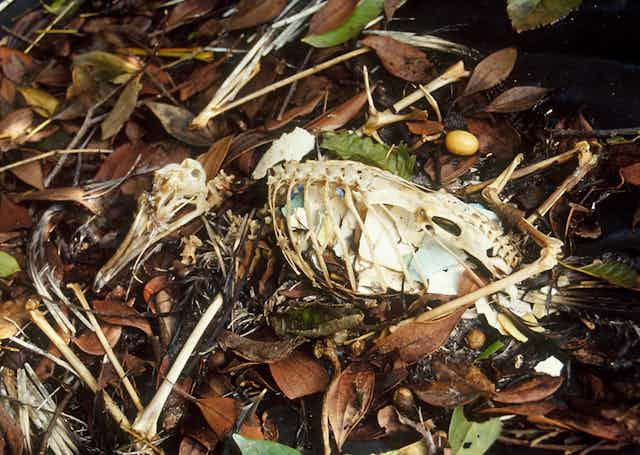Seabirds: the poster children for ocean health. Fishers use them to identify fishing hot spots. Environmental and marine scientists use them as indicators of the condition of the ocean environment due to their ability to cover vast areas. But in Australia, one such species – the Flesh-footed Shearwater – is declining, while the government delays a decision on listing it as Vulnerable.
The Flesh-footed Shearwater (Puffinus carneipes) is a large, conspicuous seabird with a raucous call of “pick me, pick me” that cannot be ignored. But ignore it we do.
The birds migrate across wide expanses of the Pacific and Indian Oceans. But their main breeding grounds are on our doorstep in Australia - the largest population is on Lord Howe Island – with the remaining populations spread across South and Western Australia and New Zealand.
Those breeding grounds are in trouble. The Lord Howe Island population has declined by around 50% since 1978 (Reid et al. in press). New Zealand’s population was revised from 25,000 pairs in 2000 to 11,600 pairs in 2010, with breeding abandoned on ten islands. In Western Australia, a survey I conducted in 2011, the first in almost 35 years, found the population hovering at less than 50,000 pairs.

Multiple factors – encroaching urbanisation, bycatch mortality in fisheries, and introduced predators - account for these declines. But emerging on the scene as a serious threat to populations is the confronting issue of plastic pollution in the marine environment.
Accumulations of rubbish in the North Pacific Gyre were first noticed 20 years ago. Nicknamed the “Pacific Garbage Patch”, this area now contains up to 40 times more plastic than plankton. But the plastic problem is not limited to the Pacific Garbage Patch. Each day, our oceans are fed more than 20 million new plastic items – or around ~6.4 million tons per year. Wind and waves send this plastic around the globe, so that one country’s garbage washes up in another’s backyard.
Which brings us back to the Flesh-footed Shearwater. More than 75% of Shearwater chicks on Lord Howe contain large quantities of plastic, fed to them by their parents who mistake it for food. In 2011, one dead chick I examined had more than 275 pieces of plastic in its stomach, equivalent to a human eating around 8kg of the stuff.
Clearly, eating plastic is never going to be a good idea, but new evidence suggests it may be worse than previously thought because plastics bring with them certain chemicals known to be toxic. These include phthalates, which may be added during manufacturing to make the plastic more flexible, and heavy metals and polychlorinated biphenyls (PCBs) absorbed from the seawater. Some of these toxins have been detected at worryingly high levels in the tissues of seabirds that have ingested plastics.

And it’s not just seabirds that ingest plastics. More than 265 marine species are at risk, with new studies published every week showing fish, invertebrates (such as mussels and sea cucumbers), and even algae are ingesting plastic particles. Many of these species are at the base of the marine food chain, their fortunes dictating the success of hundreds of other species that rely on them.
So, what can we do? We can continue to apply pressure for cash for containers schemes in Australia so more plastic bottles go into recycling. And Australia can stop ignoring the plight of those animals it should be trying to preserve. In Australia, threatened species like the Shearwater are supposed to be protected under the Environmental Protection and Biodiversity Conservation (EPBC) Act, based on the International Union for the Conservation of Nature (IUCN) guidelines. But the EPBC Act is proving wholly inadequate due to cumbersome bureaucracy. Over 50 Australian bird species that merit listing according to IUCN rules remain unlisted.
The Flesh-footed Shearwater likely meets IUCN criteria for listing as Vulnerable based on an “observed, estimated, inferred or suspected population size reduction of more than 30% over the last 10 years”. Despite the necessary paper work being submitted to the Australian Department of Sustainability, Environment, Water, Population and Communities in March 2012, the Shearwater remains unlisted. The Department is delaying its decision for two and a half years, until September 2014. New Zealand, meanwhile, flexing its conservation muscles like an All Blacks haka, promptly listed the species as “Nationally Vulnerable” in September 2012.
And time does matter. While an official listing probably won’t reverse the Shearwater’s downward spiral, it could help slow it by making the species a conservation priority, freeing up state and federal funding targeted at threatened species. And it would mean that after decades in the dark, our poster child of ocean health is finally in the spotlight.

